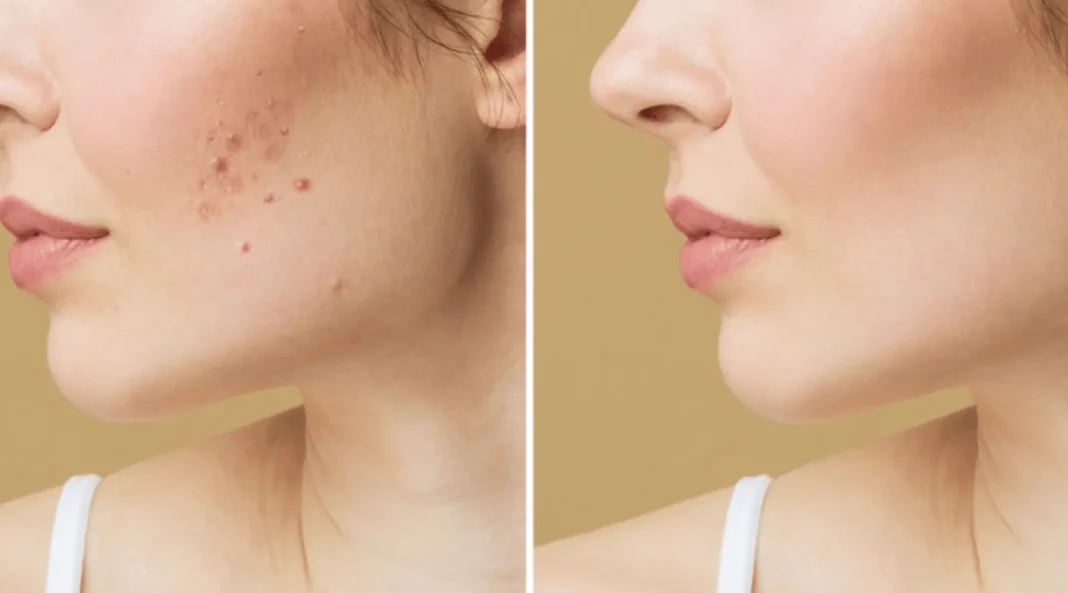Acne may be temporary, but the scars and pigmentation it leaves behind can linger for months or even years. Whether you’re dealing with red marks, dark spots, or deep indentations, treating acne scars and pigmentation effectively requires the right combination of targeted skincare, lifestyle changes, and sometimes professional treatments.
In this article, we’ll explore the best treatments for acne scars and pigmentation, from clinical procedures to proven at-home remedies. You’ll also find a helpful table and answers to common questions for choosing the right treatment for your skin.
Types of Acne Scars and Pigmentation
Not all acne marks are the same. Understanding their type helps in choosing the best treatment.
1. Post-Inflammatory Hyperpigmentation (PIH)
- Appearance: Brown or black flat spots
- Cause: Excess melanin after inflammation
- Best treated with: Brightening agents, exfoliants, sunscreen
2. Post-Inflammatory Erythema (PIE)
- Appearance: Red or pink marks
- Cause: Damaged capillaries
- Best treated with: Anti-inflammatory skincare, laser treatments
3. Atrophic Scars
- Appearance: Depressions or pits (ice-pick, boxcar, rolling scars)
- Cause: Loss of collagen
- Best treated with: Microneedling, retinoids, fillers
4. Hypertrophic/Keloid Scars
- Appearance: Raised, firm scars
- Cause: Overproduction of collagen
- Best treated with: Steroid injections, laser therapy
Best Treatments for Acne Scars and Pigmentation
1. Retinoids (Retinol, Tretinoin)
Why it works: Speeds up skin cell turnover, fades hyperpigmentation, and boosts collagen to reduce scars.
How to use: Start with a gentle over-the-counter retinol 2–3 nights a week, and gradually increase frequency.
Best for: Hyperpigmentation, mild atrophic scars
2. Chemical Peels
Why it works: Peels with glycolic, lactic, or salicylic acid exfoliate dead skin, fade pigmentation, and stimulate new skin growth.
How to use: Done professionally or with at-home products (low concentration). Start with once per week.
Best for: PIH, PIE, light textural scarring
3. Vitamin C Serum
Why it works: Brightens skin, reduces melanin production, and evens out skin tone.
How to use: Apply in the morning after cleansing and before moisturizer.
Best for: Post-acne pigmentation
4. Microneedling
Why it works: Creates tiny wounds that trigger the skin’s healing response, increasing collagen and improving texture.
How to use: Performed by dermatologists or at home with a derma roller (with caution).
Best for: Atrophic scars, enlarged pores
5. Laser Resurfacing (Fractional CO2, IPL)
Why it works: Targets deep scars and pigmentation by removing damaged skin layers and promoting regeneration.
How to use: Requires consultation and multiple sessions. Minimal downtime with some lasers.
Best for: Severe acne scarring, deep hyperpigmentation
6. Azelaic Acid
Why it works: Fights bacteria, reduces redness, and lightens dark spots by slowing melanin production.
How to use: Apply 1–2 times daily as a cream or gel.
Best for: Sensitive skin, rosacea-prone skin, pigmentation
7. Sunscreen
Why it works: Prevents dark spots and scars from worsening and supports the effectiveness of all other treatments.
How to use: Apply broad-spectrum SPF 30+ every morning, reapply every 2 hours if exposed to the sun.
Pro tip: If you’re also wondering How to Get Rid of Dark Spots on Face Fast, consistent sunscreen use is the most important step to prevent recurring pigmentation.
Comparison Table: Best Acne Scar & Pigmentation Treatments
| Treatment | Targets | Speed of Results | At-Home or Professional | Notes |
|---|---|---|---|---|
| Retinoids | Scars & pigmentation | 6–12 weeks | Both | Start slowly, use sunscreen |
| Chemical Peels | PIH, PIE, light scars | 4–6 weeks | Both | Mild downtime possible |
| Vitamin C | Pigmentation | 2–4 weeks | At-Home | Best used in AM |
| Microneedling | Atrophic scars | 1–3 sessions | Professional preferred | May need numbing cream |
| Laser Resurfacing | Deep scars & pigmentation | 2–5 sessions | Professional | High cost, significant results |
| Azelaic Acid | PIH, PIE | 6–8 weeks | At-Home | Gentle on sensitive skin |
| Sunscreen | All types | Ongoing | At-Home | Prevents further darkening |
Lifestyle Tips to Support Scar and Pigmentation Treatment
- Avoid picking or squeezing pimples
- Hydrate well to support skin healing
- Eat antioxidant-rich foods (berries, leafy greens, nuts)
- Limit sun exposure, even on cloudy days
- Follow a consistent skincare routine
FAQs: Best Treatments for Acne Scars and Pigmentation
Q1: How long does it take for acne scars to fade?
Answer: Mild pigmentation can fade in 4–6 weeks with treatment, while deeper scars may take several months or require professional intervention.
Q2: Can I treat acne scars at home?
Answer: Yes, many treatments like retinoids, vitamin C, azelaic acid, and mild peels can be used safely at home. Severe scars may need professional care.
Q3: Are acne scars permanent?
Answer: Not always. With the right treatment, most scars and pigmentation can be significantly reduced, though some deep scars may remain without in-office treatments.
Q4: Which treatment works fastest?
Answer: Chemical peels and laser therapy offer some of the fastest visible improvements, but also come with higher cost and potential downtime.
Q5: What’s the best treatment for dark skin?
Answer: Azelaic acid, niacinamide, and gentle chemical exfoliants are safe for darker skin tones. Laser treatments should be performed by experienced professionals to avoid pigmentation issues.
Final Thoughts
Dealing with acne scars and pigmentation can feel like a long road, but today’s treatments offer real hope for smoother, brighter skin. Whether you’re using over-the-counter products or seeking professional help, the key is consistency, patience, and sun protection.
Combining multiple treatments—like retinoids at night, vitamin C in the morning, and regular exfoliation—often yields the best results. And don’t forget the role of sunscreen in any skin recovery plan. If you’ve already been searching for How to Get Rid of Dark Spots on Face Fast, the right SPF product is not just optional—it’s essential.
With the right care and a well-planned routine, acne scars and pigmentation don’t have to be permanent.


